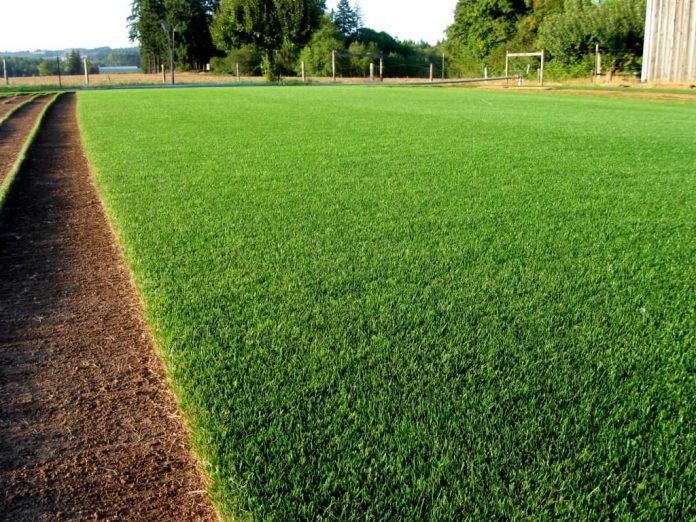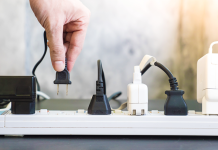Homesfornh.com– Growing lawn in the front yard brings a beautiful landscape. Most types of lawns like to get direct sunlight, even though some lawns tolerate a shady place. If you like to green your home facade, you should grow a lawn for the entire front yard. It makes your yard looks attractive and brings a calm mind. Even you can enjoy many activities outdoor in your front yard. If you want to make a green facade in your front yard, we will give you some tips to take care of the lawn in the front yard. So, stick around and take your notes on these points. Some grasses are drought resistant, so you can have them in the front yard and get enough sunlight. Direct sunlight is good for their growth. There are the best grasses for the front yard:
- Fescue Grass
- Bermudagrass
- Augustine grass
- Zoysia grass
- Kentucky Bluegrass
Since we know the kinds of grass that live under the sunlight, it will do just fine to plant them in your front yard. We have listed some tips to care for the grass as a lawn. Here, the common types of grass to greenery the front yard. Let’s discuss!
Bermuda Grass
Bermuda grass is a recommended grass for the front yard. It is also popular as a lawn for the sports fields such as baseball, football, and golf. If you want to grow more healthy bermudagrasses, here a short guide for you:
-
Watering
It is drought-resistant grass. Bermuda grass can stand in a dry condition, but it needs adequate water during the summer season. You can water the grass by installing a watering sprinkle. The new seeds need more water. You can water the new growing grass 2-3 times a day.
-
Fertilization
You can give this a regular fertilizer and supplements. Since this is an aggressive grower plant, it is enough to give few fertilizers for this grass. From March to November, fertilize this grass 2-4 times.
-
Aeration
Use an aeration machine for the best result. It gives good holes for the lawn to get air and water. Aerate Bermuda grass in the spring season to the early summer 1-2 times. These seasons have fresh air to make your Bermuda grass healthy.
-
Mowing
It needs frequent mowing. Mow this grass for the 1.5-2 inches for the best heights. Since this is a fast-growing plant, you can mow Bermuda grass once a week but do not mow them in the first month during the early growing period.
-
Pests
The common pests are weeds and insects. The weeds are crabgrass and clover that infect the soil. Thus, you need to kill the weeds without killing the grass. You need the control weed solution to spray on the lawn. Go to the gardening shop and ask for the best product to control the weeds. Japanese beetle, billbugs, and mole cricket are common insects. Use Milky sport and other insecticides for Bermuda grass.
Tall Fescue Grass
Tall fescue grass is good grass to grow in the yard. It is an excellent grass as your lawn. This is a short guide for you to care for fescue grass:
-
Watering
Tall fescue grass is cool-season grass. Tall fescue grass tolerates the warm temperature. It thrives stronger under the sunlight. The frequent watering depends on the climate around this grass. Water it when the temperature is too hot. It helps them live healthy during the dry season.
-
Fertilization
Tall fescue grass likes to get 3-5 pounds of nitrogen once a month. You need to use slow-release fertilizer during the spring and the late winter. This grass thrives in that season, so don’t fertilize this grass after the end of spring. Don’t forget to read the instruction in the fertilizer sack.
-
Aeration
Aerate this grass once a month. You can start to aerate the lawn when the soil becomes wet. The clay soil needs more oxygen to breathe and prevents rotten roots. Aerate the Tall fescue grass in September, then fertilize them and give them enough water.
-
Mowing
You can mow this grass from March until May. It also depends on the height of your grass. You can mow them frequently to control the heights for no more than 3 inches. The long grass creates a strict texture. Leave the clippings on your lawn because it is good for fertility.
-
Pests
This grass has crabgrass pests. You can apply preemergence herbicides to kill the weeds. Goosegrass and foxtail are other weeds that may grow between your grass. Don’t use herbicides from June to August because it affects the soil to get drought easily.
Zoysia Grass
Zoysia grass has a comfortable texture to thrive in your front yard. This grass creates a comfy lawn for you to do outdoor activities. Hence, you need to care for your Zoysia grass as below:
-
Watering
Zoysia grass is a low-maintenance grass for your lawn. Watering this grass once a week during the hot climate is enough to keep them green and healthy. Zoysia grass includes in a perennial plant that will grow back every year. Thus, giving routine watering for them is beneficial to get a long-lasting Zoysia grass.
-
Fertilization
This grass will grow well even though it gets low fertilizer. When this grass is growing well in the environment, it creates a green landscape under the sunlight. This grass has a light green color, and it will be more beautiful in good maintenance such as fertilizing them once a month. It needs 2-3 pounds of nitrogen, then give it more nitrogen as fertilizer.
-
Aeration
You need to aerate your grass once a month to give fresh air to its roots. Before aerating your lawn, you should remove the thatch layer from the lawn. Use an aeration tool to make some small holes around it. The spring and summer seasons are the best choices to aerate this lawn.
-
Mowing
Since it is a low-maintenance grass, you don’t need to mow this grass too often. It is a slow grower grass, and it is fine for heavy foot traffic. This grass will turn brown in March due to the summer season. Mow this grass as your need. Maintain the grass at 1-1.5” is nice for a perfect lawn.
-
Pests
The common pests for this grass are billbugs and armyworms. At the same time, the weeds are crabgrass and clover. Kill the insects and weeds by using the herbicide product from the gardening store. Don’t forget to clean the lawn by using a rake after mowing in the cool climate.
St. Augustine Grass
Stenotaphrum Secundatum or St. Augustine grass is one of the popular grasses to grow in the front yard. It loves warm sunlight and tolerates partial sun. Here, the short guide to taking care of St. Augustine Grass:
-
Watering
St. Augustine grass tolerates partial sunlight. It is drought-resistant grass. Even though this grass thrives well in dry conditions but it needs more water during the summer. You can water your lawn in the front yard once a week.
-
Fertilization
The right time to fertilize is when the grass turns green after three weeks. It likes to get nitrogen, choose the fertilizer that has nitrogen-rich 32-0-10 NPK formulation, Nitrogen (N), Phosphorus (P), Potassium (K). Scotts Southern Turf Builder Lawn Food is the best overall fertilizer for St. Augustine grass.
-
Aeration
St. Augustine grass thrives well in well-draining soil. It grows rapidly and has coarse-textured leaves. Do aeration around the leaves during the summer season when it grows well. If the soil starts to compact, aerate this lawn twice a year. Don’t forget to give water after aerating your lawn.
-
Mowing
When you mow this grass, it is important to use a sharp blade to avoid irritation. You can mow this grass when you see the long turf. Mow your lawn at a range of 2 to 2.5” height for comfortable steps. A routine mowing is important to stimulate their growth once per week. Mowing is the recommendation to care for your lawn.
-
Pests
The common pest of St. Augustine grass are weeds, insects, and fungi. The grey leaf, brown, and yellow grass are the common patch lawn. The rotten roots are the other problems with lawn by fungal in the soil for a certain period. White grub worms and Chinch bugs are the common insects on lawns.
Thus our discussion of Green and Shady Home: Tips to Care for Your Lawn in The Front Yard. Planning a green landscape around your house looks stunning by growing grass. Many types of grasses to grow in the yard that you can choose to adjust to the climate, season, and soil. Most grasses are good to grow in a sunny place, but some tolerate partial shade. Good maintenance is important to keep the lawn green and grows well. We hope that the short guide above is useful to help you maintain a healthy and green lawn. The key is the watering and mowing routine. Good luck!








